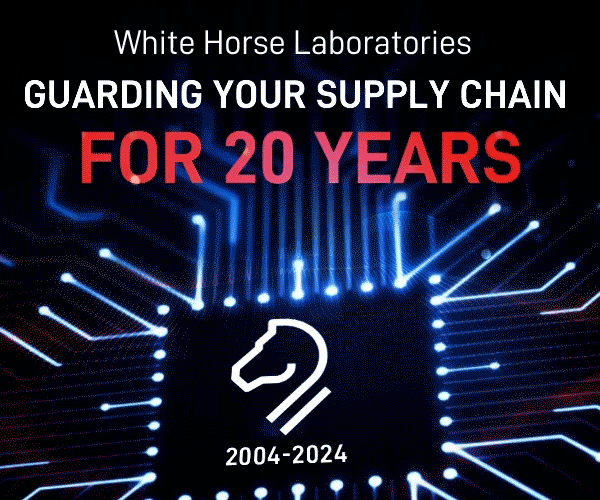The App-Based MES Fallacy: A Critical Look at 4 Common Yet Flawed Arguments

By Francisco Almada Lobo, CEO Critical Manufacturing
If I just had a dollar for every time Manufacturing Execution System (MES) has been declared dead…
- It has been declared dead when industry 4.0 surged and promised a decentralized IoT revolution
- It has been declared dead when microservices became a trend, while MES was considered a monolith
- It has been declared dead when IoT Platforms proliferated and promised real-time reactions and insights
- It has been declared dead when digital twins started to appear and promised real-time visibility
- It has been declared dead when apps popped up and started resolving front-line worker scenarios in easy intuitive ways.

Francisco Almada Lobo
Yet, contrary to these repeated proclamations of demise, my observation tells a different story. MES is not just surviving; it’s thriving, witnessing growing adoption and expansive planning. One might assume this resurgence is confined to our niche or perhaps just within our company and partner ecosystem. But that’s not the case. MES’s resilience and adaptability have proven its critics wrong, time and again, reaffirming its critical role in the evolving manufacturing landscape.
In my quest for clarity, I stumbled upon a recent report from LNS Research that shed new light on the matter. This report revealed a remarkable trend: a substantial uptick in MES projects that are not just planned, but actively implemented or piloted. The data was striking, especially when compared to the preceding three years. It painted a picture of renewed vigor and interest in MES, contradicting the popular narrative of its decline.

In fact LNS claims that “IX Leaders are 156% more likely to consider an enterprise-wide deployment of an Manufacturing Execution System (MES) compared to Followers.”
So much for being dead….
Why is MES Still a Thing?
Rewinding to the origin story, MES’s journey began even before it had a name. Its roots can be traced back to its early adoption in Semiconductor and Pharmaceutical manufacturing plants, long before AMR Research (eventually integrated into Gartner) officially coined the term in 1992.
As digital transformation swept across various sectors, it didn’t just touch the surface of manufacturing and organizational processes; it went deeper, expanding its influence into adjacent areas and transcending mere physical operations. This evolution propelled MES into a realm far beyond its original blueprint and definitions, morphing it into a far more expansive and multifaceted system.
As the term seemed dated, there were many attempts to create new names for this more comprehensive and sophisticated category. Attempts to rebrand MES under more modern monikers like MESA (Manufacturing Enterprise Solutions Association) and MOM (Manufacturing Operations Management) by ISA-95 surfaced, yet they failed to gain widespread acceptance.
Instead, MES adapted and grew, embracing modularity, flexibility, and technological advancements. This adaptation saw the emergence of new market players, injecting fresh perspectives and capabilities into a domain that seemed to stagnate in the early 2000s. New features, wider coverage, new technologies and new business models have been added.
Today, MES stands as a testament to adaptability, transcending its initial definition to become an integral, expansive component of modern manufacturing, likely to outlast the very term that defines it.
The App-Based MES Fallacy: A Critical Look at 4 Common Yet Flawed Arguments
All these death sentences are easily disproved with data, but in this article the topic is apps. In almost all cases where I hear that it would be best to use apps to replace MES systems, it is for one of the following reasons.
1. Our Unsuccessful MES Project Experience
In a post on LinkedIn that LNS made promoting this report mentioned above, they referred to one of the reasons for this resurgence in such an expressive way that I can only leave here an excerpt:
“What else has come with this change? A whole new set of IT and Ops leaders that don’t have the scars of past failed MES implementations.”
Yes, MES projects are difficult. They are transformative and have enormous potential and often go far beyond the immediate direct benefits. But they require vision, tenacity, resilience and above all the involvement of the various departments whose work will have more or less impact on the project.
When this does not happen, especially when companies do not have the right maturity and mindset, or when the solutions or consultants are not suitable, projects are much more likely to fail. And many did.
So why should it be different now?
Simply put, newer solutions are faster, simpler, and less expensive to implement, especially when specifically built for certain industries. “First, acknowledge that the solution landscape has improved…providers today offer: More SaaS, More Modularity, and More Industry-specific capabilities than ever before.”
2. Current MES: Below Par but Hard to Replace
For many early adopters, MES is a tidy affair: we already have one, it’s up and running; it is very difficult to replace; let’s keep it and develop functionality around it.
The notion of replacement seems daunting, akin to uprooting a century-old tree. Yet, the march of progress waits for no one. As businesses evolve, the need for innovation becomes paramount, and legacy MES systems, heavily customized over time, often become stumbling blocks, complicating upgrades, integration, and future-proofing efforts.
The journey to replace an antiquated MES is not without its challenges, yet it is a necessary evolution. This transformation is unique for each organization, shaped by a delicate balance of risk, time, and cost, influenced by factors like interdependence, automation levels, and the impact on downtime. Strategies vary from a ‘big-bang’ overhaul, a gradual phase-in, or running parallel systems.
Despite the challenges there are countless cases of successful migrations. We wrote a white paper diving deep into this complex topic, offering an exploration of the advantages and drawbacks of each strategy, guiding businesses through this critical transition that you can download here:

3. Acceptable Functionality, but Shortcomings in Usability and Flexibility for Frontline Workers
In today’s manufacturing landscape, the stark reality is that while MES solutions often meet basic requirements, they often fall short in delivering on usability and flexibility, particularly for those on the frontlines of production. For far too long, MES vendors have neglected the specific needs of production operators, now more aptly termed as ‘production frontline workers.’ The focus was predominantly on standardizing graphical interfaces, simplifying transitions between functions without burdening users with the need to learn new applications.
However, this approach has lagged behind the curve. In the realm of manufacturing, the emphasis on usability and user experience (UX) began to gain attention only after it became a standard consideration in almost every other industry. This delay in adaptation is becoming increasingly problematic, especially in an era marked by a critical shortage of human resources in manufacturing sectors and growing concerns over stagnant labor productivity in these areas.
Now, the industry stands at a crossroads, necessitating a shift in perspective. It’s imperative to recognize and address the urgent need for MES solutions that not only meet basic functional requirements but also excel in usability and adaptability, catering specifically to the needs of those who keep the wheels of production turning. The future of manufacturing depends on our ability to innovate and evolve in how we design and implement these critical systems.
A report from Microsoft, already from 2022, is worth reading, exploring findings from a very large survey of frontline workers and managers.
Although there are many interesting points, what struck me when I read this for the first time were the answers to the question: “what reduce stress on the frontline?”. 64% mentioned a “pay increase”; 50% mentioned “taking paid time off from work”; and 46%, the 3rd most referred item, was “better technology tools that make my job easier”. It is incredible how technology took such a level in the Maslow’s hierarchy of needs.

This perception changed the paradigm of manufacturing software solutions. Today solutions are imperatively more flexible, with better usability, ergonomics and above all more adapted or personalized to the role in question. The use of low-code / no-code solutions made it much easier to make these adaptations so that the graphical interface is a perfect fit for the frontline worker functions. Plus, technologies such as AR and digital-twins further augments their ability to perform their functions more efficiently and with fewer errors.
4. The Temptation of Simple Apps vs. Complex MES Deployments
A veteran analyst of the MES space (hope he doesn’t mind if I call him a friend), had a wonderful sentence to describe every attempt to occupy the space with less capable solutions: “Light is good for beer, not for MES”.
Opting for a quick-fix app to address a specific need can be tempting, and indeed, there’s a place for such solutions. However, relying solely on a patchwork of apps to construct an entire MES infrastructure is akin to building a house of cards. It might stand for a moment, but at the first sign of trouble, it’s destined to collapse.
Reflecting on the past, there was a time when specifying an “integrated MES” was critical. Back then, diverse, isolated applications handled everything from data collection and work instructions to quality control and maintenance. While some plants still operate this way, it’s widely recognized as far from ideal.
The shift towards integrated MES, especially in sectors like semiconductor and electronics, came about for a good reason. It provides a holistic, plant-wide perspective, enabling a seamless flow of information among operations and support roles, including engineering, quality, and maintenance. This integration isn’t just a luxury; it’s a necessity for context-rich, efficient operations.
A robust MES requires a comprehensive data model, transactional integrity, traceability, and control mechanisms, all woven seamlessly across the entire manufacturing process. Thus, the idea of substituting this intricate system with a collection of independent, siloed apps is impractical, if not impossible.
The challenges don’t end with the lack of a unified model. Governance of these disparate applications, especially when considering multi-site operations, turns this into a veritable perfect storm. The need for an integrated MES system is not just about technology; it’s about maintaining a harmonious, efficient, and sustainable manufacturing ecosystem.
The Case for Siloed Apps: When They Shine
Indeed, apps have their place in the digital landscape, particularly for their ease of creation and deployment, tailored for specific scenarios. They become especially relevant in environments where concerns about cross-functional consistency, unified process flows, integrated data models, area-to-area traceability, and overarching governance are minimal or non-existent. In such contexts, deploying siloed apps is not just viable; it’s advisable.
Here’s where dispersed apps can be a good option:
Untapped Digital Realms: Often, areas neglected by broader digital transformation efforts — like certain laboratory or logistics operations — can significantly benefit from these targeted applications.
Bridging the Gap: In scenarios where comprehensive integration is on the horizon but not yet feasible, siloed apps serve as an effective interim solution, filling the digital void in the short term.
Enhancing MES Functionality: Where an MES system falls short in usability, custom apps can step in, built upon the MES foundation to deliver more user-friendly, effective solutions.
Augmenting Decision-Making: These apps can also play a crucial role in providing additional visibility or contextual insights, serving as valuable tools that supplement operational decisions.
In summary, while the allure of a fully integrated system is undeniable, the strategic use of siloed apps in these specific scenarios can not only fill crucial gaps but also enhance the overall effectiveness of your digital ecosystem.
The Future will be the Era of Composability
In the fast-evolving world of manufacturing, the concept of ‘composability’ is emerging as a beacon of the future. Imagine a world where manufacturing apps operate as modular blocks, each specializing in aspects like execution, automation, or analytics. These apps don’t just function in isolation; they enhance and enrich the core workflows of existing enterprise manufacturing software.
Composability is the key that unlocks this potential. It’s about crafting broader, more robust solutions by leveraging existing products or components, rather than starting from square one. Picture a manufacturing platform akin to a Lego set, where each ‘app’ can be seamlessly integrated, fostering an environment ripe for innovation.

While challenges in governance persist, the benefits are substantial. By reusing features from stable and reliable foundations, like solid underlying MES systems, we can ensure a cohesive flow of manufacturing processes and industrial data. This integration spans not just the production line or shop floor but extends its reach across the entire supply chain.
In this new era, composability isn’t just a concept; it’s the cornerstone of a more flexible, responsive, and innovative manufacturing landscape. We may not have fully arrived there yet, but the trajectory is clear and the destination inevitable.
Gartner has been very active on this topic over the past years and I fully share their vision of where we’re at and where we’re going:
“So, the answer to the question “Are composable manufacturing systems in your future?” is “Yes” — especially the “in your future” part.












